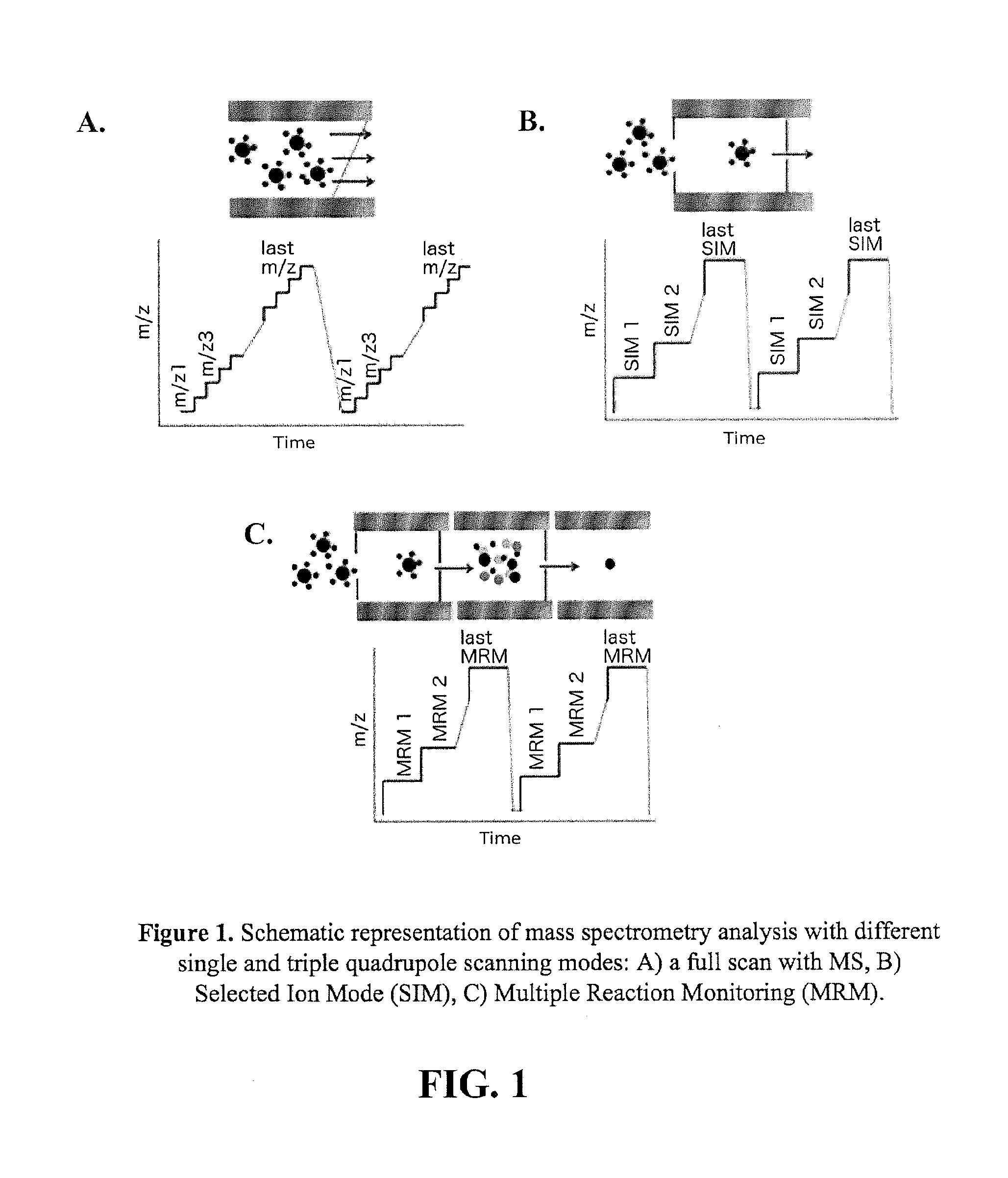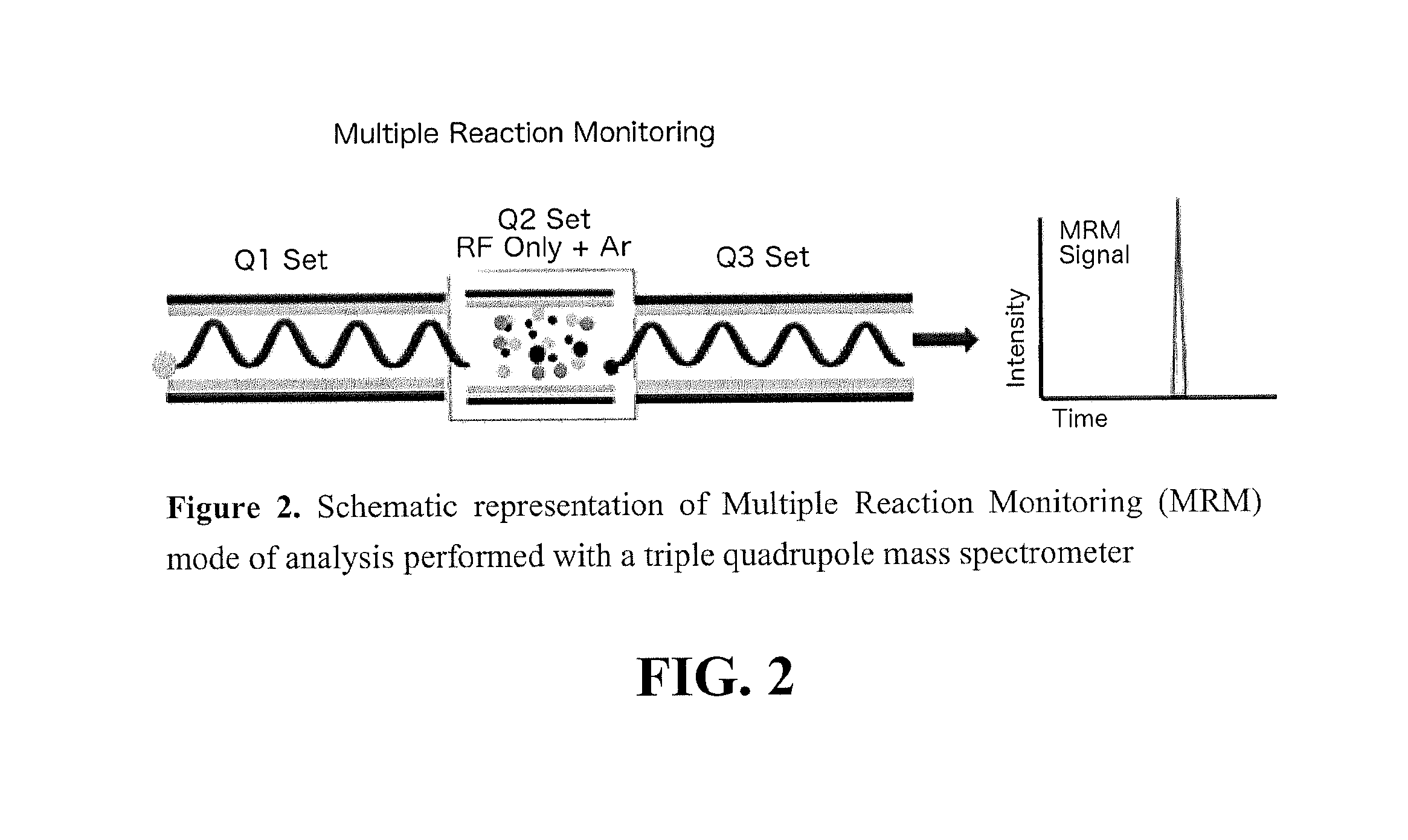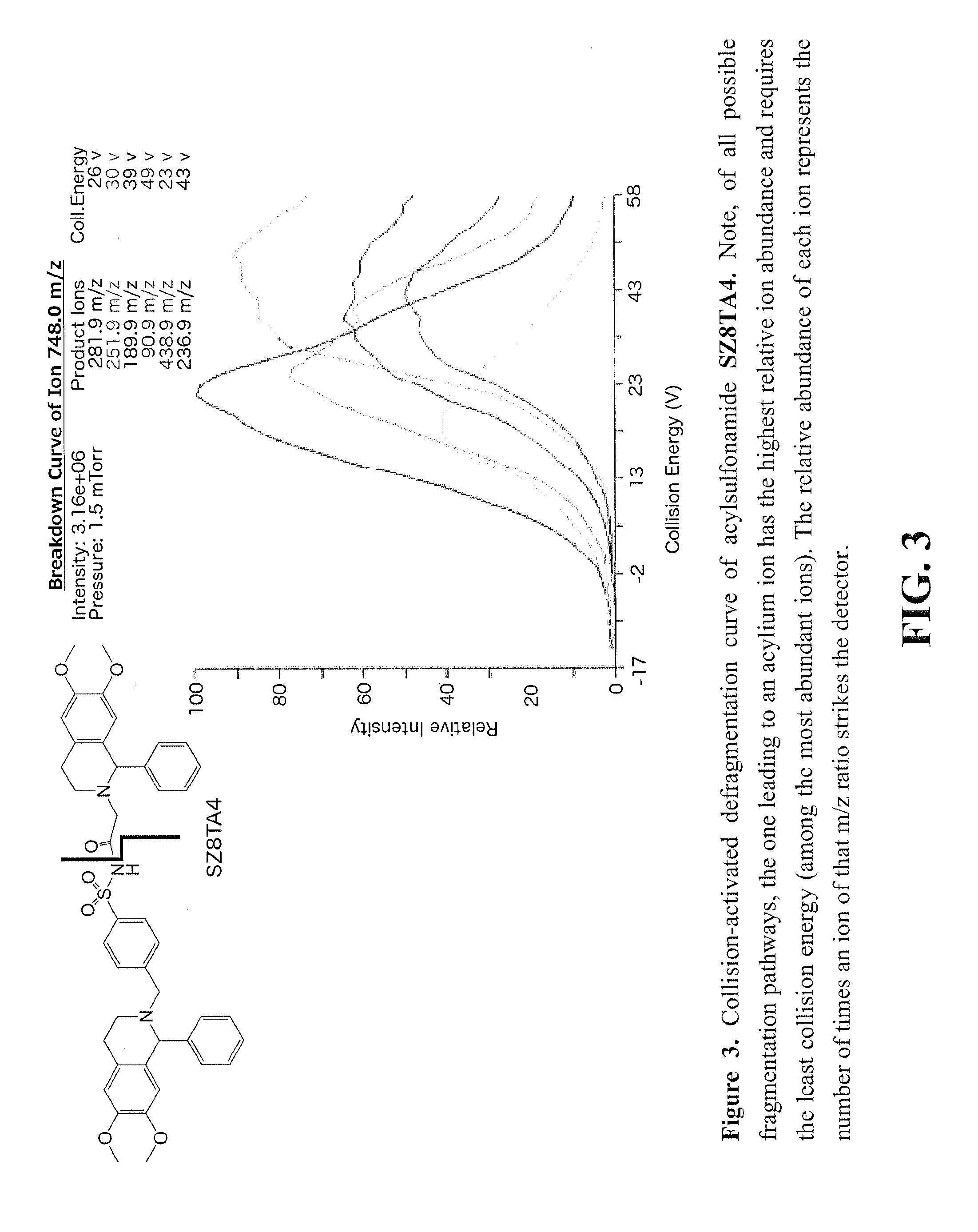Target Binding Molecules Identified by Kinetic Target-Guided Synthesis
- Summary
- Abstract
- Description
- Claims
- Application Information
AI Technical Summary
Benefits of technology
Problems solved by technology
Method used
Image
Examples
example 1
General Protocols
[0144]All reagents and solvents were purchased from commercial sources and used without further purification. Column chromatography was carried out using Merck Kieselgel 60 H silica gel. 1H NMR, 13C NMR were recorded on a Bruker 250 MHz and Varian 400 MHz NMR spectrometer. All 1H NMR experiments were reported in δ units, parts per million (ppm) downfield of TMS and were measured relative to the signals for chloroform (7.26 ppm) and deuterated methanol (3.35, 4.78 ppm). All 13C NMR spectra were reported in ppm relative to the signals for chloroform (77 ppm). The HRMS data were measured on an Agilent 1100 Series MSD / TOF with electrospray ionization. The LC / MS data were measured on Thermo Scientific TSQ 8000 Triple Quadrupole LC / MS or an Agilent Technology 6460 Triple Quad LC / MS, using a Phenomenex column Kinetex 2.6 μm PFP, 4.60 mm×50 mm. The elution gradient employed for TQMS-MRM analysis is shown below:
TABLE 1Elution gradient employed for TQMS-MRM analysisTime% B*Fl...
example 2
General Protocol for Multi-Fragment “Sulfo-Click” Kinetic TGS Experiments with Mcl-1 and Bcl-XL
[0145]2 mM stock solutions of the required sulfonyl azide building blocks in methanol was prepared in advance and 100 μL of each stock solution was combined in a via (using all sulfonyl azides needed for the multi-fragment incubation). The solvent was evaporated and 100 μL fresh MeOH was added in the vial in order to obtain multi-component mixture of sulfonyl azides with 2 mM final concentration of each suflonyl azide. Each thio acid used for the multi-fragment screening was prepared by individually de-protecting the corresponding fluorenylmethyl thioesters (˜500 μg weighted in a 2 mL eppendorf) with 5% piperidine in DMF for 2-4 min (1 μL solution used for 4.7 μmol thioester) and each reaction was diluted with methanol in order to generate 20 mM stock solution of the corresponding thio acid. The thio acids required for the multi-component screening were combined in an eppendorf vial and f...
example 3
Parallel Sulfo-Click Kinetic TGS Screening of Multiple Protein-Protein Interactions: Advantages of the Use of MS / MS Instrumentation in Kinetic TGS
[0146]Obstacles of conventional kinetic TGS due to the instrumental limitations could be overcome by a screening using a more advanced mass spectrometry technology. For example, the triple quadrupole mass spectrometry (TQMS) is a proven technique with numerous advantages offering superior sensitivity over the single quadrupole instrumentation. TQMS offers a better signal-to-noise ratio (S / N), resulting in a significantly lower limit of detection and quantitation. Moreover, the analysis with this highly sensitive technology allows for a simultaneous detection of several targeted reactions by using a Multiple Reaction Monitoring (MRM) mode as opposed to Selected Ion Mode (SIM). In comparison to the full-mass scan (FIG. 1.A), the SIM mode (FIG. 1.B) provides higher sensitivity due to a longer instrument dwells time on a narrower mass range wi...
PUM
| Property | Measurement | Unit |
|---|---|---|
| Interaction | aaaaa | aaaaa |
Abstract
Description
Claims
Application Information
 Login to View More
Login to View More - R&D
- Intellectual Property
- Life Sciences
- Materials
- Tech Scout
- Unparalleled Data Quality
- Higher Quality Content
- 60% Fewer Hallucinations
Browse by: Latest US Patents, China's latest patents, Technical Efficacy Thesaurus, Application Domain, Technology Topic, Popular Technical Reports.
© 2025 PatSnap. All rights reserved.Legal|Privacy policy|Modern Slavery Act Transparency Statement|Sitemap|About US| Contact US: help@patsnap.com



